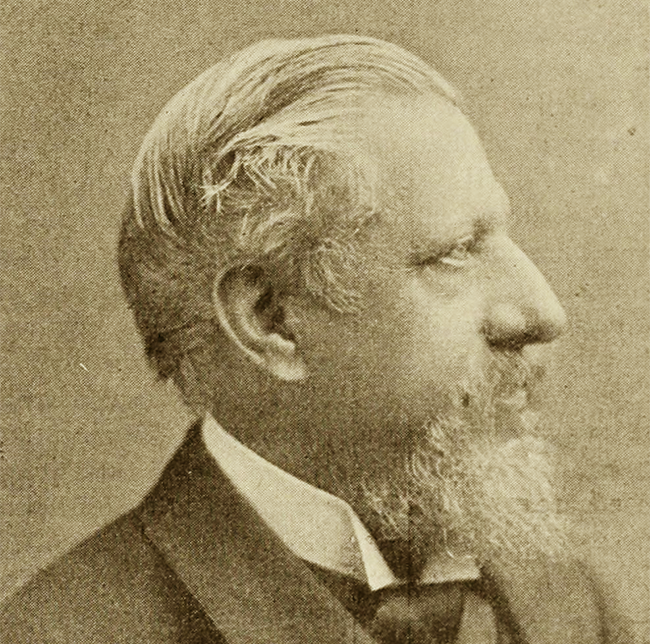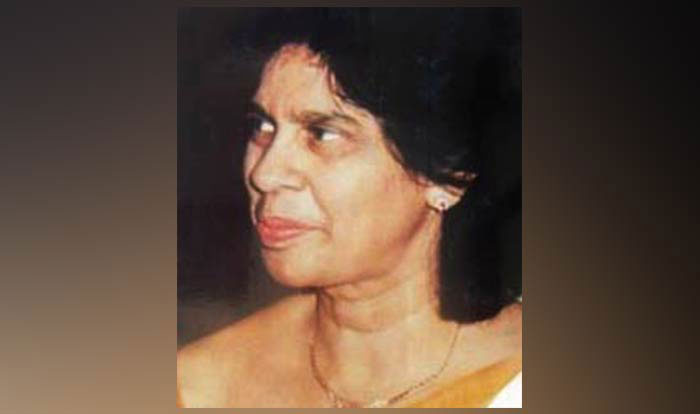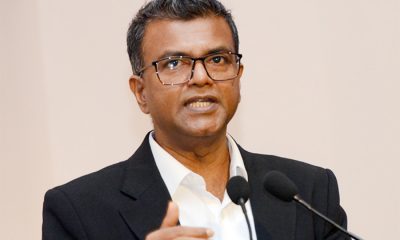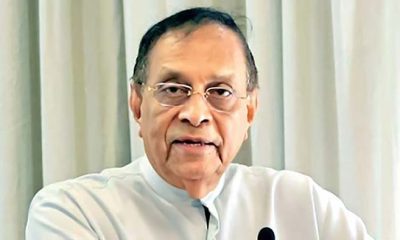Opinion
On first reading Sir Edwin Arnold’s THE LIGHT OF ASIA – II

by Rohana R. Wasala
Edwin Arnold’s purpose in composing the epic The Light of Asia, then, was to give readers an unbiased idea about the exalted personality of prince Siddhartha and the general substance of his teaching. But he was not addressing this task in a religious cultural vacuum. He had to take care not to step too hard on the religious toes of his contemporary Christian compatriots. Undaunted by that challenge, Arnold opens his monumental epic with the line ‘The Scripture of the Saviour of the World’, which was startling in its being used to mean the Buddha and his doctrine. It must have sounded very distasteful to the Christian readers of the West, because it was not about Christ, but about the little known Indian sage the Buddha.
But then, it was a time of profound intellectual upheaval. The Age of Reason or the Enlightenment in Europe of well over one and a half centuries duration had preceded Charles Darwin’s revolutionary theory of biological evolution, that came to be known to the world through the publication of his epoch-making book ‘On the Origin of Species by Means of Natural Selection’ (1859). By that time the Buddha was not totally unknown in the West. Ideas of ancient Eastern philosophers like Confucius of China and the Buddha of Bharat (India) as well as thoughts of their Western counterparts like Plato had influenced European thinkers of the time such as David Hume, Emmanuel Kant, and John Locke who figured in the enlightenment movement in Europe that came to be called the Age of Reason (1685-1815). The growing scientific ethos among the people undermined traditional religion and the fast spreading general scepticism regarding long held beliefs dealt a severe blow on theistic religion. Edwin Arnoldl’s senior contemporary Matthew Arnold (1822-1888), in his dramatic monologue ‘Dover Beach’ (1867), could only hear the receding ‘Sea of Faith,’
Its melancholy, long, withdrawing roar Retreating to the breath Of the night-wind, down to the vast edges drear And the naked shingles of the world.
The bleak barren desolate scene (with the ‘naked shingles of the world’: picture the wet pebbles on the indifferent beach constantly washed by the weeping waves) is a very depressing image of the uncertainty, the despair and the sadness that descended on a world that was losing the emotionally stabilising power of traditional religious faith. But it was also a time of bold inquiry and burgeoning hope. Edwin Arnold must have been emboldened by the existing zeitgeist of his time to shock his potential readers thus, only to offer them another more rational source of refuge to explore.
In terms of structure, The Light of Asia consists of eight cantos: Book the First, Book the Second, and so on up to Book the Eighth. The long epic poem employs the blank verse form, that is, lines of poetry without rhyme, that use a definite metre (a recurring pattern of rhythm) nevertheless. From the beginning to the end, the narrative is delivered in iambic pentameter lines (i.e., each line is made up of five metrical feet, each foot here being an iamb, that is, a foot consisting of a short syllable followed by a long syllable. Take any line from the poem, you can scan it into five iambic feet. But of course, occasionally, there are functional variations of the metre (as explained below). The opening line of Book the First (hence, of the whole poem) is ‘The Scripture of the Saviour of the World’, which can be scanned thus: The Scrip/ture of/the Sa/viour of/the World; the resulting stress pattern highlights the important words: Scripture, Saviour, World. The blank verse form more closely imitates the rhythm of natural speech than rhymed verse does, and, additionally, it makes for easy narrative continuity.
In Book the First, we are given the usual fictionalised narrative of how the Buddha-to-be descended from heaven to be born in the world of humans. Arnold recounts such details as Maya’s dream, its interpretation, and before all that, the ‘five sure signs of birth’ (which, though not specified in the poem, are equivalent to what we are familiar with as the Pas Maha Belum/the Great Fivefold Observation {kaalaya, deepaya, deshaya, kulaya, maata/time, land, state, caste, mother}) that preceded the Bodhisattva’s descent to the earth from ‘that sky’ (or the Tusita heaven according to Theravada Buddhist literature).
(Queen Maya)
Dreamed a strange dream; dreamed that a star from heaven –
Splendid, six-rayed, in colour rosy-pearl,
Whereof the token was an Elephant
Six-tusked, and white as milk of Kanadhuk –
Shot through the void; and shining into her,
Entered her womb upon the right…….
Thus was Siddhartha (the Bodhisattva/Buddha-to-be) conceived in his earthly mother’s womb. The birth takes place under a Palsa in the Palace-grounds in Kapilavastu (instead of under the shade between two Shala/Sal or cannonball trees on the way to Maya’s maternal home in Rajagriha/Rajgir, according to the story we know):
The conscious tree bent down its bows to make
A bower about Queen Maya’s Majesty;
And Earth put forth a thousand sudden flowers
To spread a couch……………
The narration of these miraculous occurrences which were claimed to have accompanied the birth of Siddhartha (‘All-Prospering’) did not spoil my enjoyment of the story, which was already known to me with similarly fantastic details, despite my then growing scepticism towards religion. People of different faiths usually adopt a healthy ‘suspension of disbelief’ when confronted with such fanciful accounts of events connected with the lives of religious figures that they adore, mostly because they are rational enough to read them as literature (a fact that Arnold himself was aware of and wanted his readers to understand as well).
The Queen mother dies seven days after the prince’s birth because she was ‘grown too sacred for more woe – And life is woe…………’
When old enough to learn all that a prince should learn, Siddhartha is entrusted to the wisest teacher available: Vishvamitra. But struck by the extraordinary precocity of his ‘softly-mannered, modest, deferent, tender-hearted…..’ royal charge, the old teacher
Prostrated before the boy; “For thou”, he cried,
Art Teacher of thy teachers – thou, not I,
“Art Guru. Oh I worship thee, sweet Prince!
The young prince also excelled in physical feats that formed a part of his training. He was a bold horseman and a skillful chariot driver. But he was so kindhearted that
Yet in mid-play the boy would oft-times pause,
Letting the deer pass free; would oft-times yield
His half-won race because his labouring steeds
Fetched painful breath; ……………………
One day while in play, Siddhartha’s cousin Devadatta shot a swan with an arrow and the injured bird fell to the ground. Siddhartha picked it up, removed the dart, and applied a poultice of soothing herbs on the wound. Though Devadatta wanted to have the bird that he had shot down, Siddhartha refused to give it back. An unknown priest suddenly appeared to mediate between the two cousins, and handed the bird to Siddhartha, saying that ‘the cherisher of life deserved the living bird, and not its slayer’. When the father king looked for the mysterious priest to reward him, he was gone:
And someone saw a hooded snake glide forth, –
The gods come oft-times thus! So our Lord Buddh
Began his works of mercy………………
It is in Book the Second that Arnold is seen giving full play to whatever he imbibed from his literary-aesthetic interaction with the Gita Govinda of Jayadeva, which Arnold seems to have used as a model for his own poetic masterpiece. The absolute devotion to the Buddha that Arnold expresses as an imaginary Buddhist votary in the capitalised last lines of the poem quoted in the epigraph to this essay indicates that his discovery of Buddhism was indeed a life changing experience.
While continuing my own narrative here, I consider this point an appropriate place to say something again about the form of the epic poem we are having a glance at. Now, too rigid an adherence to a set metrical foot is boringly mechanical at times (See the second paragraph above). Poets avoid this by varying it according to the context (as Shakespeare did in his plays). For example, from Book the Second we have
‘But they/ who watched/ the Prince/ at prize/-giving
Saw and/ heard all/ and told/ the care/ful King’
Here, the first line is a perfect iambic pentameter line. In the second line, however, the first two feet are trochees, not iambs; in a trochee, in contrast to an iamb, the stress or accent falls on the first syllable: Saw and/heard all/…. The context in the poem is where some courtiers, who have been attending on prince Siddhartha during a festival of royal beauties arranged by his father the ‘careful’ (full of care, i.e., worried, anxious) king Suddhodana on the advice of his wisemen to distract his eighteen year old young son from a premature otherworldliness that they had observed in his demeanour, are reporting to the king a sudden brightening of the prince’s mood on seeing the beautiful princess Yashodhara. What the watchful guards saw and heard passing between the two (Siddhartha and Yashodhara) gladdened them: they had instantly fallen in love with each other.
Whereas every one of the other maidens who came to receive gifts from the prince that day, even the fairest one among them,
….stood like a sacred antelope to touch
The gracious hand, then fled to join her mates
Trembling at favour, so divine he seemed,
So high and saint-like and above her world,
Yashodhara alone ‘Of heavenly mould’
Gazed full – folding her palms across her breasts –
On the boy’s gaze, her stately neck unbent.
“Is there a gift for me?” she asked, and smiled.
“The gifts are gone”, the Prince replied “yes take
This for amends, dear sister, of whose grace
Our happy city boasts”, therewith he loosed
The emerald necklet from his throat, and clasped
Its green beads round her dark and silk-soft waist;
And their eyes mixed, and from the look sprang love.
Those who stood nearest (the guards, no doubt) saw ‘the princely boy – Start, as the radiant girl approached….’ and they heard the sweet exchanges between the two instant lovers.The brief break in the metre in the verse line that records this highlights their (the guards’) joy and excitement at being finally able to bear the long awaited news of their happy finding to the fond father, the king they serve with so much love and loyalty.
This is a climactic moment of the whole scene (where the prince, set to choose his bride/his future queen consort, has just been rescued from his accustomed otherworldly melancholia). The king’s stratagem seems to be working. He wants his son to be a Chakravartin (lit. Turner of the Disc, a universal monarch) who will rule the world, not a holy man of wondrous wisdom. (As described in Book the First, these were the two alternative destinies that the dream-readers predicted for the baby conceived that night by Queen Maya. Ultimately, though,as we know, the king’s ambition for his son was not fulfilled. Siddhartha became Buddha instead of a Chackravartin.)
Long after Siddhartha attained Buddhahood, he is asked “why thus his heart – Took fire at first glance of the Sakya girl”, and he recalls an earlier life long gone by as
A hunter’s son, playing with forest girls
By Yamun’s springs, where Nandadevi stands,
Sate umpire while they raced beneath the firs
……………………………………………..
One with fir-apples; but who ran the last
Came first for him, and unto her the boy
Gave a tame fawn and his heart’s love beside.
This is just like a scene from Jayadeva’s Gita Govinda. Krishna/Govinda plays with Radha in a forest glade on the banks of the very same Yamuna. It is one of the swooning love scenes between the resplendent Blue God Krishna (in the form of Govinda) and the radiantly fair human cowherdess Radha during their heavenly trysts that Jayadeva enacts for us in his poem. While giving his account of the Siddhartha Yashodhara romance, Arnold is trying to infuse his poem with a touch of the divine magic of Jayadeva’s poetry.
Father Suddhodana creates for his son ‘….. a pleasant prison-house – Where love was gaoler and delights its bars’. The poet beautifully paints how the prince gradually grows tired of those delights. Around the end of Book the Fourth, Siddhartha has decided to renounce everything and embark on his lonely search for the Truth as a mendicant recluse. Channa, his charioteer, asks him:
Wilt thou ride hence and let the rich world slip
Out of thy grasp, to hold a beggar’s bowl?
Wilt thou go forth into the friendless waste
That has this Paradise of pleasures here?
The Prince made answer, “Unto this I came,
And not for thrones: the kingdom that I crave
Is more than many realms – and all things pass
To change and death………
The rest of the poem actualizes the ascetic Gautama’s painful exploration and his blissful ultimate discovery. Book the Seventh and Book the Eighth outline the doctrines of the Buddha as Edwin Arnold conceived of them in his essentially limited understanding of the Dhamma, which consisted of ‘the fruits of considerable study’ though. (Concluded)
Opinion
Lessons from Ukrainian Debacle

Why Sri Lanka must continue to pursue a Non-Aligned, yet Multi-Aligned Foreign Policy:
by Ali Sabry, PC
In a world increasingly polarised by great-power rivalries, Sri Lanka must remain steadfast in its time-tested foreign policy doctrine: non-alignment. Our strategic location in the Indian Ocean, economic aspirations, and long-term stability demand that we engage with all global actors without becoming pawns in their geopolitical games.
The ongoing crisis in Ukraine offers a stark reminder of what happens when small and mid-sized nations get caught in the crossfire of major power struggles. For Sri Lanka, the lesson is clear: we must remain non-aligned yet multi-aligned, engaging with all, avoiding entanglements, and ensuring that our sovereignty is never compromised.
The Ukrainian Crisis: A Cautionary Tale for Small States
Ukraine’s tragedy is not just a distant war; it is a lesson in realpolitik for all small nations. Over the past two decades, Ukraine found itself on the fault line between NATO and Russia. By aligning too closely with one camp, it triggered existential fears in the other. When the crisis escalated, Ukraine was left to bear the full cost of war. its cities reduced to rubble, its economy in shambles, and millions of its people displaced.
Despite strong international support, Ukraine has suffered devastating consequences. The military and financial aid it has received has come at a tremendous cost, both in human lives and economic ruin. No amount of Western backing has spared Ukraine from becoming the battlefield of a larger geopolitical contest.
For Sri Lanka, the lesson is simple: never allow ourselves to become the battleground for someone else’s war. We must ensure that our sovereignty is non-negotiable and that our foreign policy choices are dictated solely by our national interests, not by the strategic ambitions of global powers.
Sri Lanka’s Foreign Policy: The Power of Equidistance
Sri Lanka has historically been a champion of non-alignment. From our role in the Non-Aligned Movement (NAM) to our principled stand at the 1951 San Francisco Peace Conference, we have long understood that small states wield the greatest power when they remain independent in their decision making.
Over the years, we have experienced the perils of veering too far in one direction. The late 1970s saw an excessive pro-Western tilt, leading to strained relations with India and regional instability. More recently, an over reliance on China in the early 2010s resulted in economic vulnerabilities and strategic imbalances. The anti-China rhetoric of 2015 cost us dearly, almost freezing Chinese investments and triggering a devastating economic slowdown that contributed to the financial crisis.
Every time Sri Lanka has moved too close to one power bloc, it has paid a price, whether in economic pressure, diplomatic isolation, or security threats. This is why our best path forward is non-alignment in politics but multi-alignment in economic and diplomatic engagement.
What Does a Non-Aligned Yet Multi-Aligned Foreign Policy Look Like?
1. No Military Alignments, No Foreign Bases
• Sri Lanka must firmly reject any attempt by external powers to establish military bases or exclusive defence arrangements on our soil. While we should engage in cooperative security dialogues, we must not allow ourselves to be drawn into power blocs that undermine our neutrality.
2. Economic Engagement with All, Dependency on None
• We should welcome investments from all corners, India, China, the U.S., the EU, Japan, and others, while ensuring that no single actor dominates our economic landscape. A diversified economic strategy will safeguard us from economic coercion and financial vulnerabilities.
3. Diplomatic Balancing
• Just as we engage with China on infrastructure, we must strengthen ties with India for regional security and trade, collaborate with the U.S. and Europe for technology and education, and maintain strong links with Japan and ASEAN for economic opportunities.
4. Leveraging Multilateralism
• Sri Lanka must remain active in regional and global organisations like the UN, NAM, SAARC, and BIMSTEC, using these platforms to promote dialogue, trade, and security cooperation without taking sides in major power conflicts.
5. Resisting Coercion and Protecting Sovereignty
• Major powers will always seek to exert influence over small nations, forcing to take sides, whether through economic pressure, diplomatic maneuvering, or security agreements. We must have the political will to resist undue pressure and assert our sovereign right to pursue an independent foreign policy.
A Realistic Assessment of Our Size, Strength, and Interests
Sri Lanka is not a superpower. We do not have the economic or military clout to take sides in great power conflicts. But we do have strategic importance, a vital geographic location, and a respected voice in international diplomacy. If we play our cards wisely, we can turn our neutrality into an advantage, positioning ourselves as a hub for global trade, an honest broker in international disputes, and a bridge between competing powers.
We must recognise that aligning with any single power bloc, whether Western, Chinese, or otherwise, will only expose us to greater risks. Instead, a pragmatic, balanced approach will allow us to benefit from global partnerships while avoiding the pitfalls of dependency.
The Middle Path is the Best Path
Sri Lanka does not need to pick sides. We need to pick strategies that work best for our long-term stability, security, and prosperity. The world today is as divided as it was during the Cold War, and the lessons from Ukraine prove that small nations that fail to remain neutral pay the heaviest price.
Our path is clear: a foreign policy rooted in non-alignment, strengthened by multi-alignment, and guided by the unwavering principle that Sri Lanka’s future must be shaped by Sri Lankans not by external pressures.
As we move forward, we must do so unapologetically and with confidence, embracing the world, engaging with all nations, and ensuring that Sri Lanka remains sovereign, secure, and successful in an increasingly uncertain global order.
Opinion
Gnana Moonesinghe

Gnana Moonesinghe, who passed away recently had a multi-faceted life although never a career. A woman of many interests – in literature, politics, diplomacy, journalism – she spanned these divides with great felicity and charm.
Gnana Coomaraswamy was born into a well-known Jaffna family. Her father was educated at Cambridge University in England and was a barrister. He pursued a career in education being principal of a leading Jaffna school. Gnana herself had an education in Colombo, and she entered the University of Ceylon at Peradeniya, from Ladies College, in 1955.
Her sister had married Dr. Kumaran Ratnam, who was once a Mayor of Colombo. Gnana married Mangala Moonesinghe, a lawyer and politician who was a descendent of Anagarika Dharmapala. Mangala Moonesinghe was MP for Bulathsinhala in 1965-1977. During that period, Gnana was heavily engaged in looking after that electorate and developed a close relationship with many of his constituents. She enjoyed being a politician’ s wife.
When Mangala was appointed High Commissioner in New Delhi in the 1980s, Gnana found another congenial and productive occupation. She was the perfect wife of a diplomat, and the couple enjoyed the diplomatic life in New Delhi and the high profile among the New Delhi circles. Mangala and Gnana developed a close relationship with Prime Minister, Gujaral of India. While in Delhi, Gnana produced a book – “Footprints of the Buddha”. After New Delhi, Mangala and Gnana had a couple of years in London as Sri Lanka’s High Commissioner. On return to Sri Lanka, Gnana was engaged in domestic, political and civil society issues. She and Mangala had a particular interest in the ethnic issue. She was a regular contributor to the newspapers and particularly concerned with the politics of the time. She edited a book on Sri Lankan government structures some time during this period. She was a member of the Disputes Resolution Council of the Press Complaints Commission of Sri Lanka.
It is 70 years since I first met Gnana. We both entered university at Peradeniya in 1955. From 1956-1959, Gnana and I read for a special degree in Economics. There were three young women and over 20 men reading for this course. Gnana specialised in political science. Only a very few of us are still around. It is a pleasure to have known Gnana all these long years. She leaves a son, Sanath who lives in the United States, and daughter Avanti ,who is married to Murtaza Esufally.
Leelananda De Silva
Opinion
Pope decries ‘major crisis’ of Trump’s mass deportation plans, rejects Vance’s theology

by Christopher White Vatican Correspondent
Pope Francis has written a sweeping letter to the U.S. bishops decrying the “major crisis” triggered by President Donald Trump’s mass deportation plans and explicitly rejecting Vice President JD Vance’s attempts to use Catholic theology to justify the administration’s immigration crackdown.
“The act of deporting people who in many cases have left their own land for reasons of extreme poverty, insecurity, exploitation, persecution or serious deterioration of the environment, damages the dignity of many men and women, and of entire families, and places them in a state of particular vulnerability and defencelessness,” reads the pope’s Feb. 11 letter.
Since taking office on Jan. 20, the Republican president has taken more than 20 executive actions aimed at overhauling the U.S. immigration system, including plans to ratchet up the deportations of undocumented migrants and halt the processing of asylum seekers.
The pope’s letter, published by the Vatican in both English and Spanish, offered his solidarity with U.S. bishops who are engaged in migration advocacy and draws a parallel between Jesus’ own experience as a migrant and the current geopolitical situation.
“Jesus Christ … did not live apart from the difficult experience of being expelled from his own land because of an imminent risk to his life, and from the experience of having to take refuge in a society and a culture foreign to his own,” writes Francis.
While the letter acknowledges the right of every country to enact necessary policies to defend itself and promote public safety, the pope said that all laws must be enacted “in the light of the dignity of the person and his or her fundamental rights, not vice versa.”
The pontiff also goes on to clearly reject efforts to characterise the migrants as criminals, a frequent rhetorical device used by Trump administration officials.
“The rightly formed conscience cannot fail to make a critical judgment and express its disagreement with any measure that tacitly or explicitly identifies the illegal status of some migrants with criminality,” the pope writes.
Soon after Trump took office, Vice President JD Vance — a recent convert to Roman Catholicism — attempted to defend the administration’s migration crackdown by appealing to St. Thomas Aquinas’ concept of ordo amoris.
“Just google ‘ordo amoris,’ ” Vance posted on social media on Jan. 30 in response to criticism he received following a Fox News interview.
During that interview, Vance said: “You love your family, and then you love your neighbour, and then you love your community, and then you love your fellow citizens in your own country. And then after that, you can focus and prioritise the rest of the world.”
While not mentioning Vance directly by name, Francis used his Feb. 11 letter to directly reject that interpretation of Catholic theology.
“The true ordo amoris that must be promoted is that which we discover by meditating constantly on the parable of the ‘Good Samaritan,’ that is, by meditating on the love that builds a fraternity open to all, without exception,” wrote the pope.
Since his election in 2013, Francis has become one of the world’s most vocal champions. His latest letter, however, marks a rare moment when the pontiff has directly waded into a country’s policy debates.
In the letter, however, he states that this is a “decisive moment in history” that requires reaffirming “not only our faith in a God who is always close, incarnate, migrant and refugee, but also the infinite and transcendent dignity of every human person.”
“What is built on the basis of force, and not on the truth about the equal dignity of every human being, begins badly and will end badly,” the pope warned.
In a brief post on social media, the U.S. bishops’ conference shared the pope’s letter with its online followers.
“We are grateful for the support, moral encouragement, and prayers of the Holy Father, to the Bishops in affirmation of their work upholding the God-given dignity of the human person,” read the statement.
(The National Catholic Reporter)
-

 News6 days ago
News6 days agoUSD 900,000 paid monthly for three unused SriLankan aircraft– Dy. Finance Minister
-

 Latest News3 days ago
Latest News3 days agoSusantha Chandramali passes away at the age of 61
-

 Features4 days ago
Features4 days agoDid Rani miss manorani ?
-

 News7 days ago
News7 days agoParliament approved USAID and other foreign-funded projects: Karu J
-

 News7 days ago
News7 days agoBASL slams govt. over extrajudicial killings
-

 Editorial5 days ago
Editorial5 days agoDon’t eviscerate precious goose
-

 Features6 days ago
Features6 days ago2025 Budget: Challenges, hopes and concerns
-

 Editorial7 days ago
Editorial7 days agoChaotic House and moral compass











